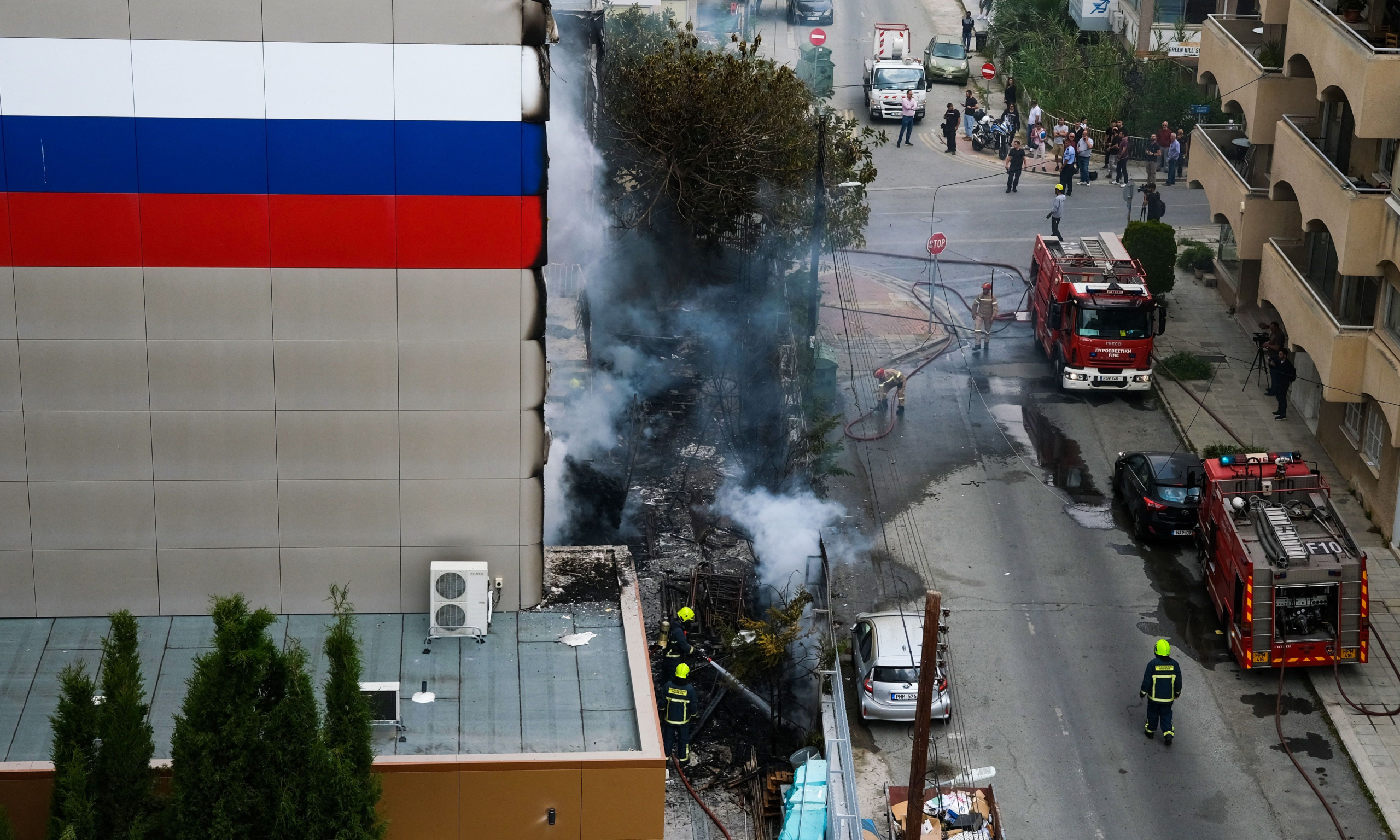Firefighters battle a blaze that broke out at the Russian Cultural Centre in Nicosia on 26 April Photo: Amir Makar/AFP via Getty Images
A fire broke out on Wednesday at a Russian cultural centre in Nicosia, Cyprus causing extensive damage. Russia’s foreign ministry claims the blaze was likely caused by arson, following earlier statements by officials in charge of the venue that the “terrorist act” was caused by a Molotov cocktail thrown into the building.
Alina Radchenko, the head of the centre, told the Russian state-owned Tass news agency that “two loud blasts” could be heard before the blaze broke out and that witnesses reported seeing “Molotov cocktails thrown into the building.”
Yevgeny Primakov, the head of Rossotrudnichestvo, the Russian government's cultural promotion agency that has been accused of spreading Kremlin propaganda and engaging in espionage, wrote on his Telegram channel that the fire was “a terrorist act”. He said: “I am sure the terrorists were supporters of the Kyiv regime, most likely from among the Ukrainians who now live in Cyprus.”
However, a fire brigade spokesman said on Thursday that no Molotov cocktails had been found in the wreckage and that the cause of the fire was still under investigation. Russia's foreign ministry confirmed there were no fatalities or injuries.
Earlier this week, a Russian missile strike destroyed the Museum of Local History in Kupyansk, a strategic city in the Kharkiv region of eastern Ukraine. The museum’s director, Iryna Osadcha, and another employee, Olena Vodopianova, were killed in the attack.
Olha Soshnikova, the director of the Sumtsov Kharkiv Historical Museum, said on Facebok: "Iryna Anatoliivna did everything possible to make the museum one of the best in Kharkiv during her tenure as director. After the liberation of Kupiansk, she continued to work to save our cultural heritage. She took care of the museum and its staff until her last moments."
She added: “Under her leadership, the museum was one of the best in the Kharkiv region, it was the centre of Kupyansk's cultural life.”

